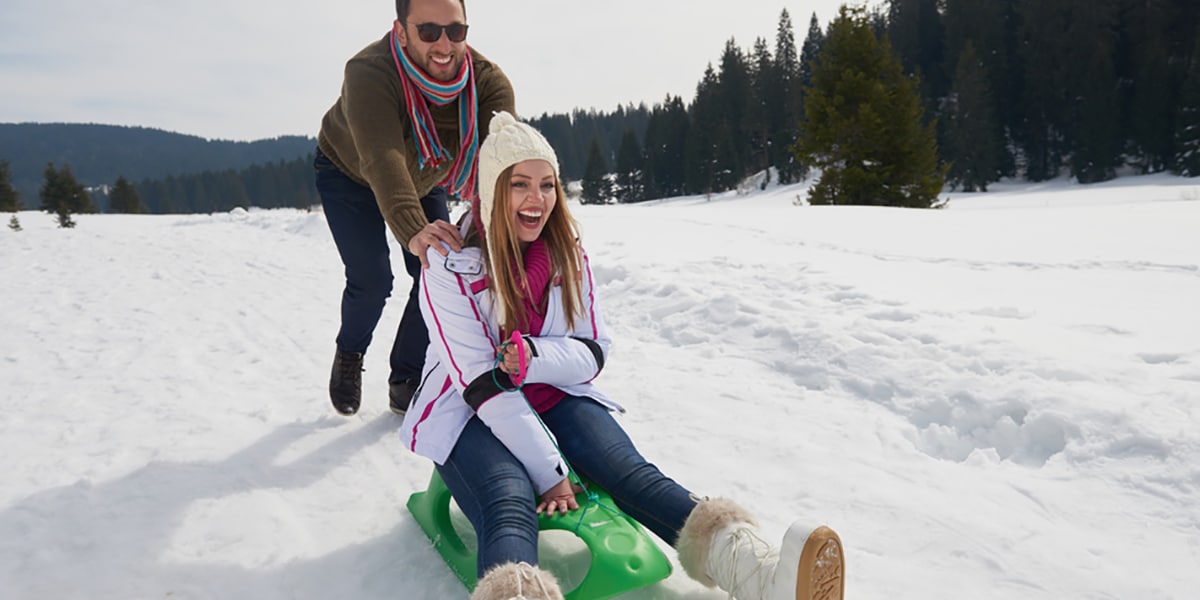Contrary to popular belief, sunburns aren’t just a thing of the summer. If you’ve read our previous post, you’ll know that you can get a sunburn in any season. Infrared radiation emitted by the sun heats the earth, while ultraviolet (UV) radiation also emitted by the sun, is the culprit behind suntans and sunburns. UV rays reflect off of snow, sand, and water; however, snow is the most reflective of these surfaces and can nearly double UV exposure. This puts winter athletes like skiers and snowboarders at an increased risk of UV-related skin damage. What’s more, with increased altitude comes increased UV exposure.¹ Wearing broad-spectrum SPF 30 sunscreen, UV protective clothing, and sun gunglasses> can help to keep your skin safe while enjoying winter sports.
Despite recommendations, one study showed that only about half of western North American adult skiers and snowboarders were wearing sunscreen with an SPF of 15 or higher, and only about a fifth reapplied their sunscreen after 2 hours as recommended.² On a warm winter day, you may be skiing or snowboarding in a T-shirt. On days like these, it’s especially important to remember sunscreen. On colder days, you’ll probably be wearing a jacket and gloves, however, the skin on your face and neck may still be exposed. The friction of the cold air on your face can cause windburn, which is especially painful when combined with sunburn. Many winter athletes forget to apply sunscreen to the underside of their chins,¹ an area vulnerable to UV rays reflecting off of the ground. The Skin Cancer Foundation recommends using a broad-spectrum sunscreen with an SPF of 30 or higher.¹If you’re planning to ski or snowboard on a warm day, consider wearing a long-sleeve UV protective shirt. UV protective clothing is specially made to protect your skin better than ordinary clothing. These articles can keep you cool while absorbing harmful UV rays. Stay tuned for a blog post about UV protective clothing.
Your eyes and the skin around them are also vulnerable when skiing and snowboarding. Sun goggles that block 99-100% of UV rays can help to protect the eye area from UV-related damage, like photokeratitis (sunburn of the eye) and cataracts. It’s best to wear wraparound sunglasses rather than regular sunglasses, especially while in snowy environments. UV rays can reflect off of the ground and reach the eye area from several angles.
Sun Index can help you to stay safe in the sun while enjoying winter sports. It will let you know the real-time UV index in your exact location, and based on your skin type, it will give you personalized sun safety recommendations.Sources:
- Skin Cancer Foundation. (2010). Essential Outdoor Sun Safety Tips for Winter. Retrieved October 25, 2016
- Buller, D. B., Andersen, P. A., Walkosz, B. J., Scott, M. D., Maloy, J. A., Dignan, M. B. and Cutter, G. R. (2012). Compliance with sunscreen advice in a survey of adults engaged in outdoor winter recreation at high-elevation ski areas. Journal of the American Academy of Dermatology, 66(1):63-70. Retrieved October 25, 2016



